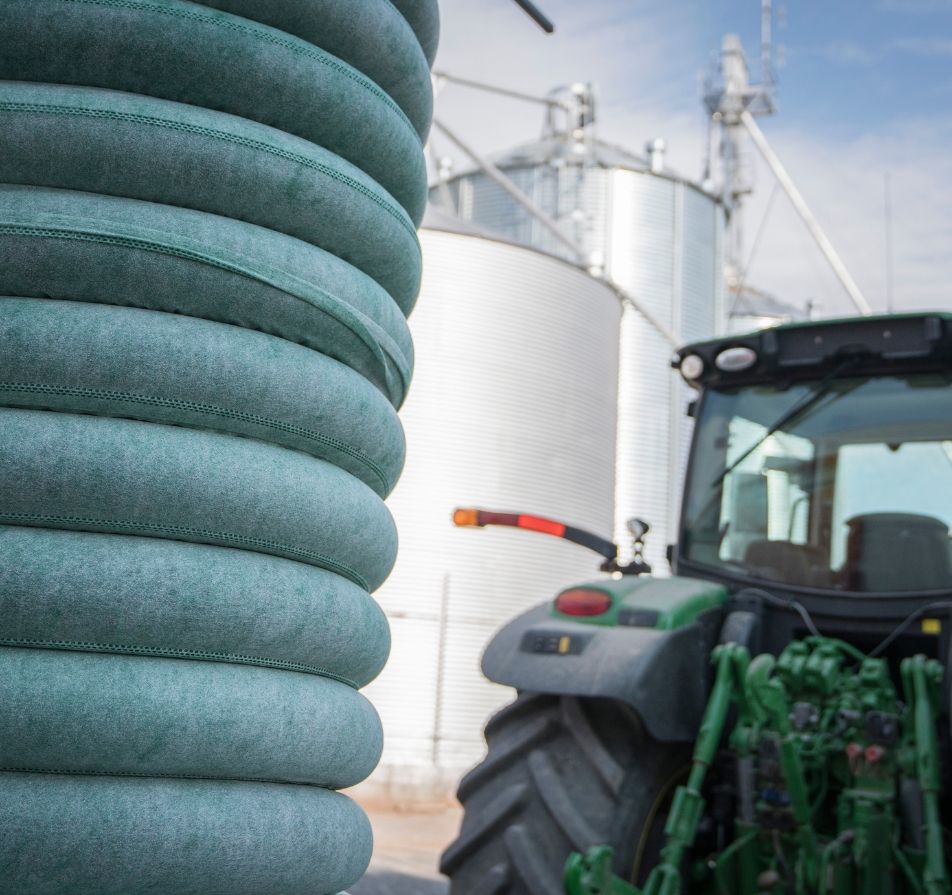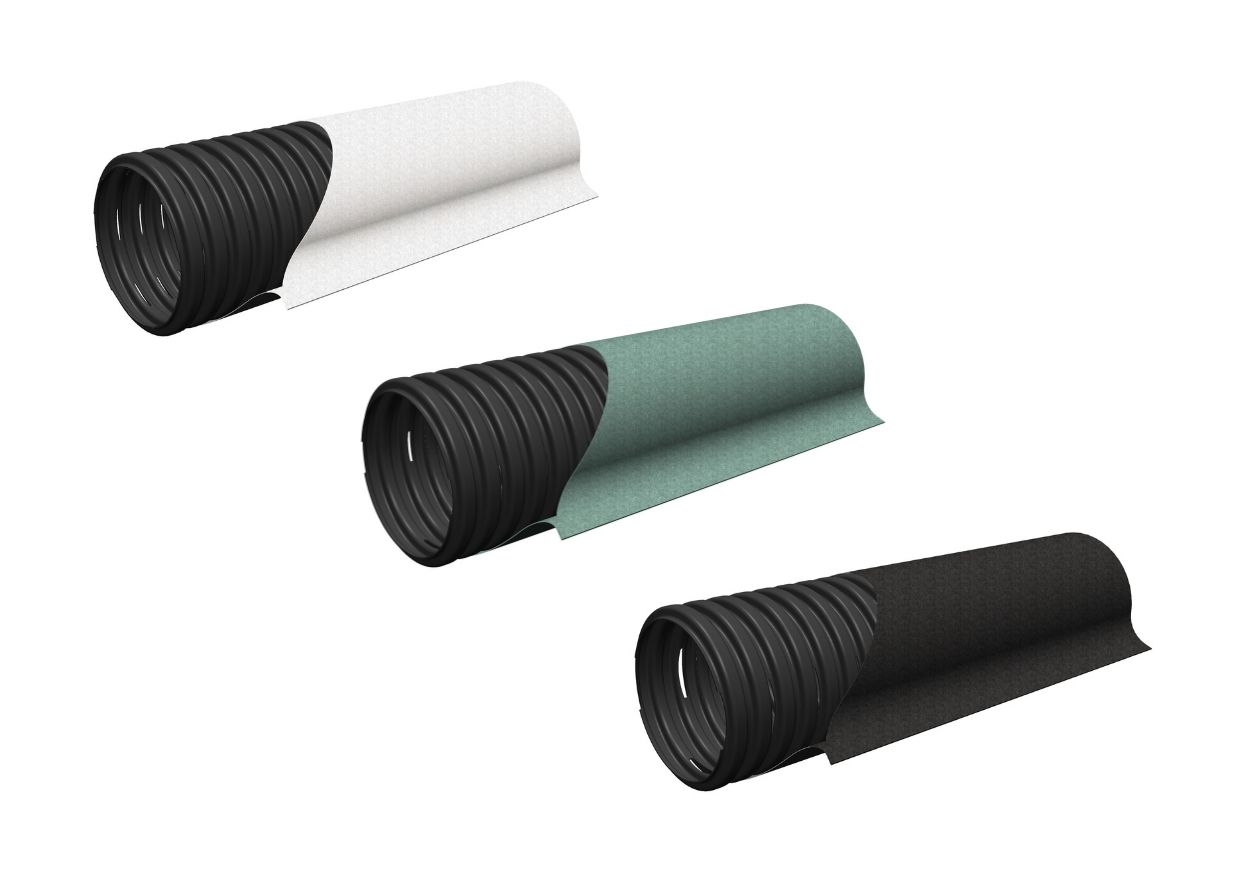The filter sheath plays an important part in keeping fine particles from penetrating the interior of the perforated drainage pipe and causing drain obstructions. Soils, composed of different types of particles (silt, sand, clay or gravel), may have low permeability.
The granulometric analysis, recommended by Soleno, determines the filtration openings required for the filter sheath to be used before undertaking a drainage project.
Discover our selection tool to choose the perfect drainage product for you, click here.

Due to their three-dimensional construction and filtration openings, non-woven geotextiles are versatile and allow the filtration of different soil types, unlike a woven geotextile which is limited to a single soil type.
Non-woven geotextiles resist UV rays.
The main functions of non-woven geotextiles in an agricultural drainage application are filtration and drainage.
Non-woven geotextiles follow the movements of the drain while maintaining their physical, mechanical and hydraulic properties; unlike knitting, they do not stretch or deform.
Nonwoven textiles provide excellent tearing resistance.
Its smaller openings prevent infiltration by fine particles.

Recommended when the results of the granulometric analysis clearly indicate a sandy or silty soil or when a draining sand is used as backfill around the drain.
Recommended when the results of the granulometric analysis clearly indicate a soil rich in fine and medium sand.
Recommended when the results of the granulometric analysis clearly indicate a soil containing coarse sand to gravel.

For more information or to order any of our products, contact us at 800 363-1471 or